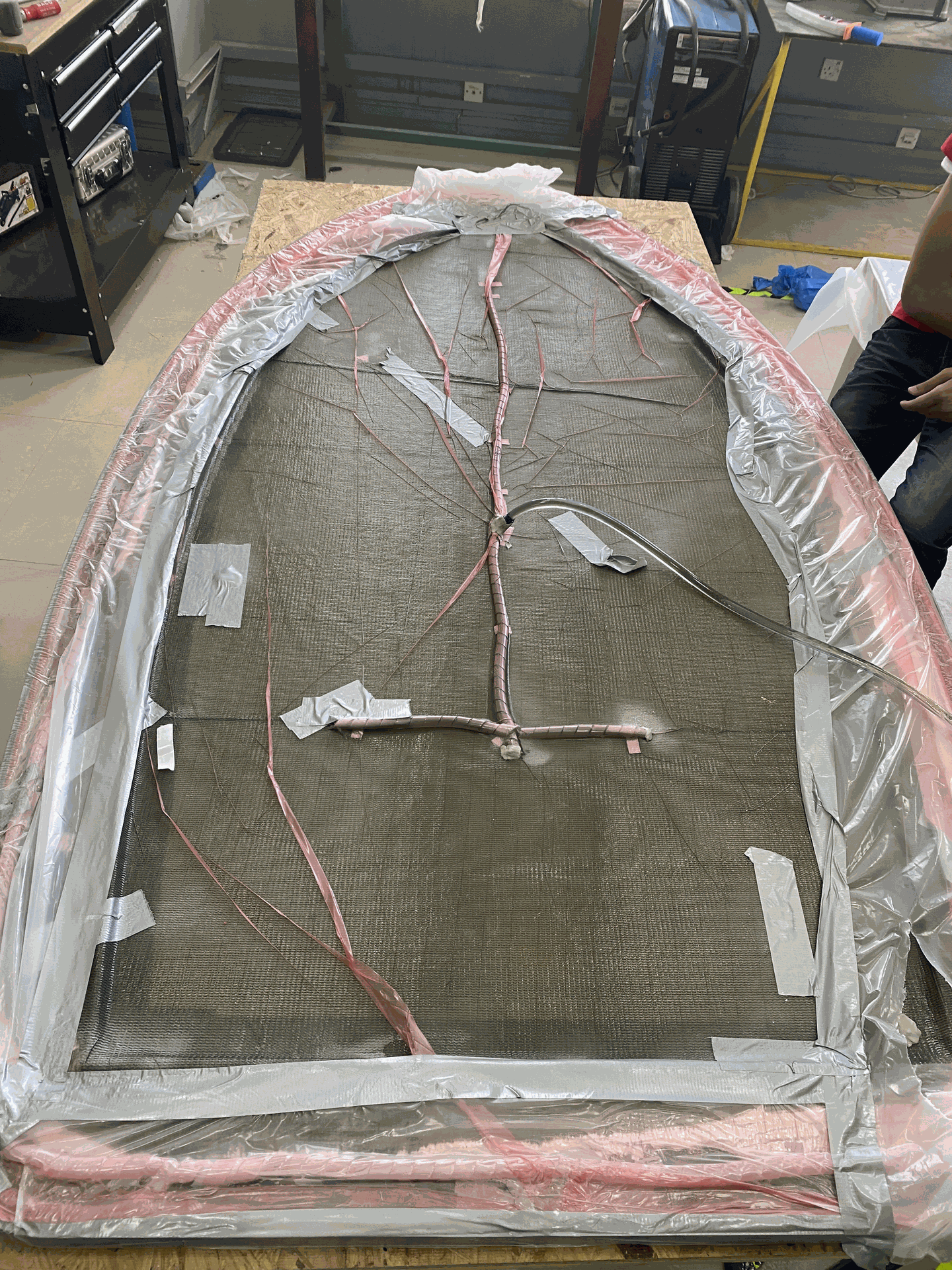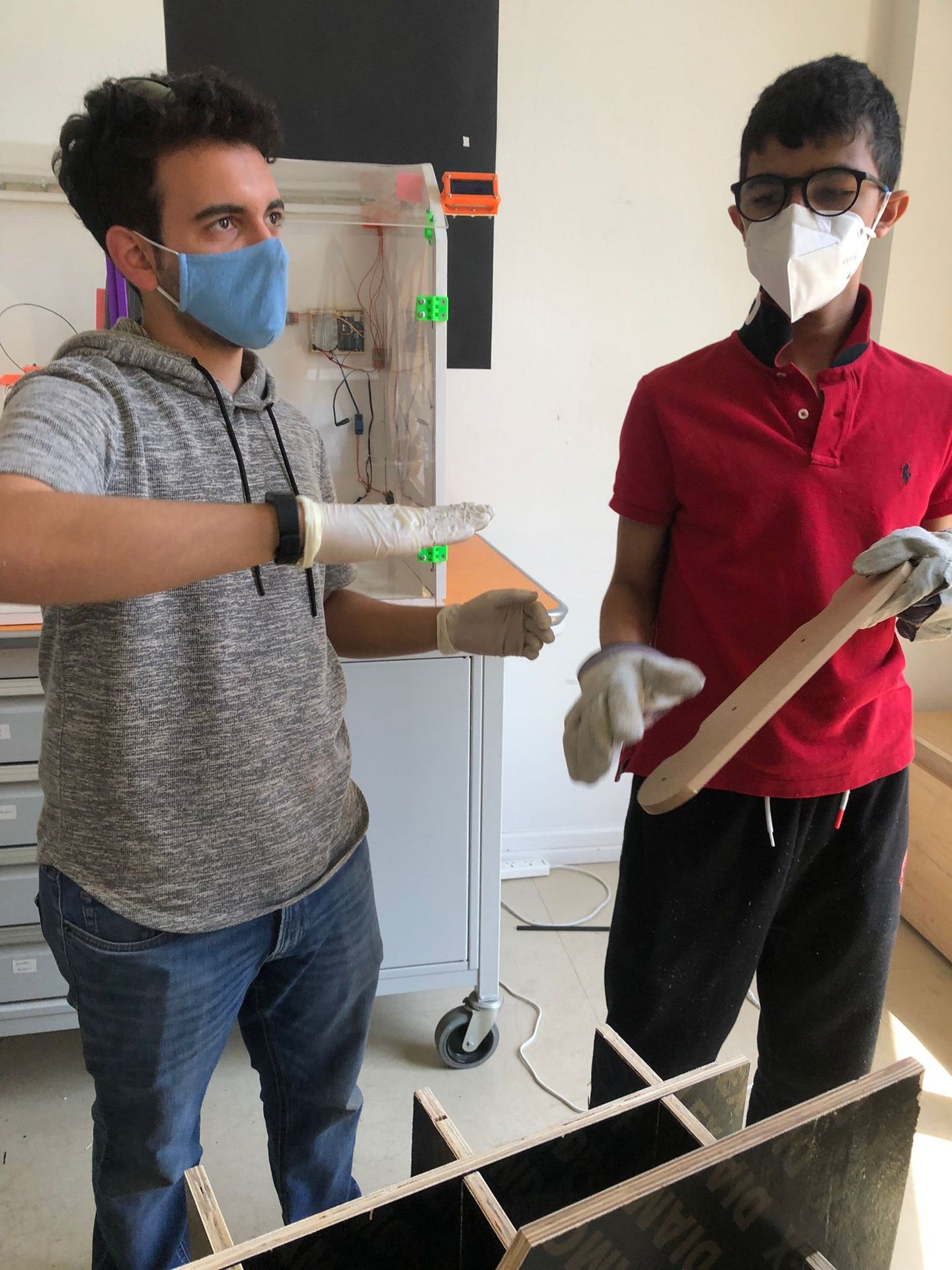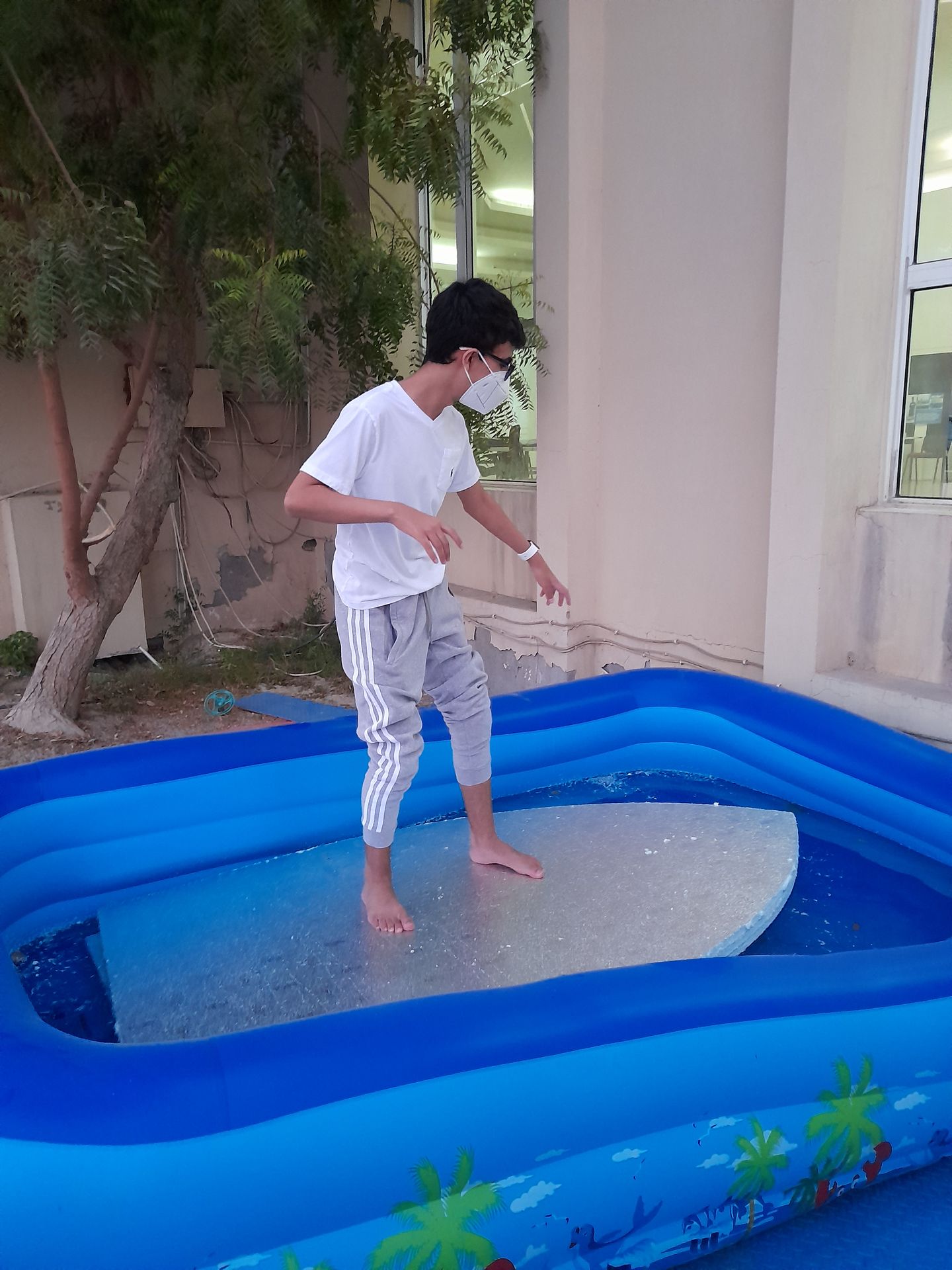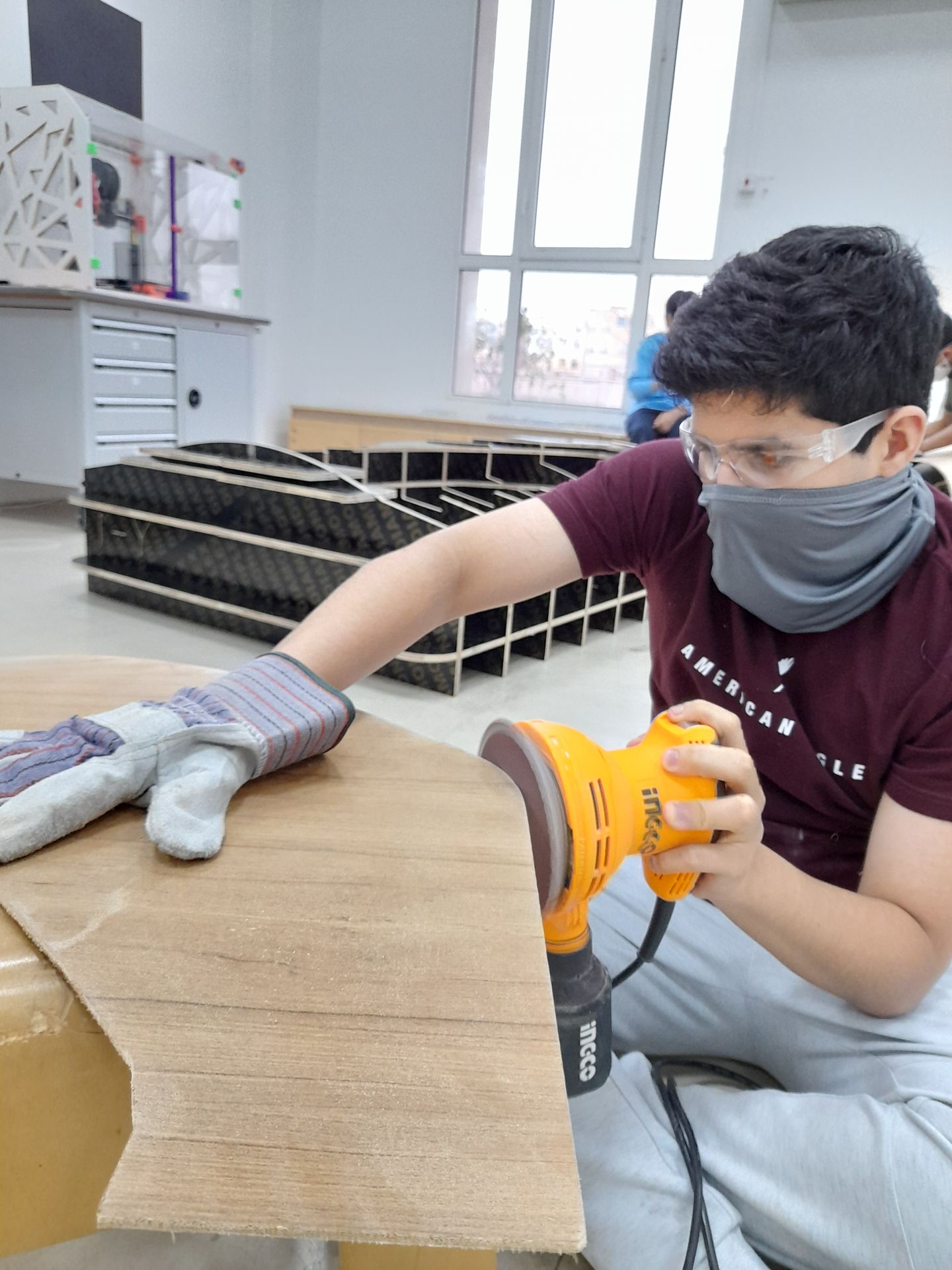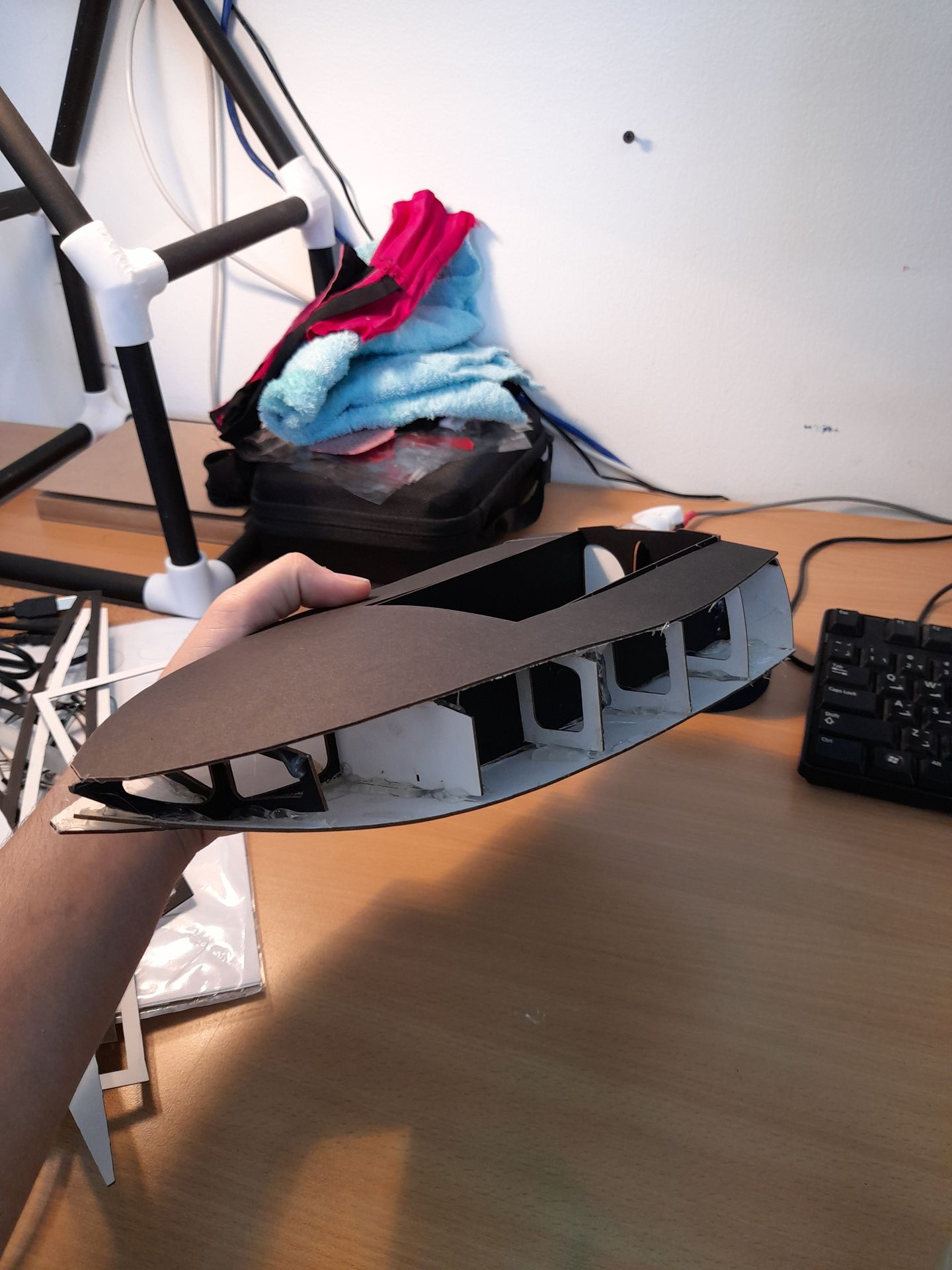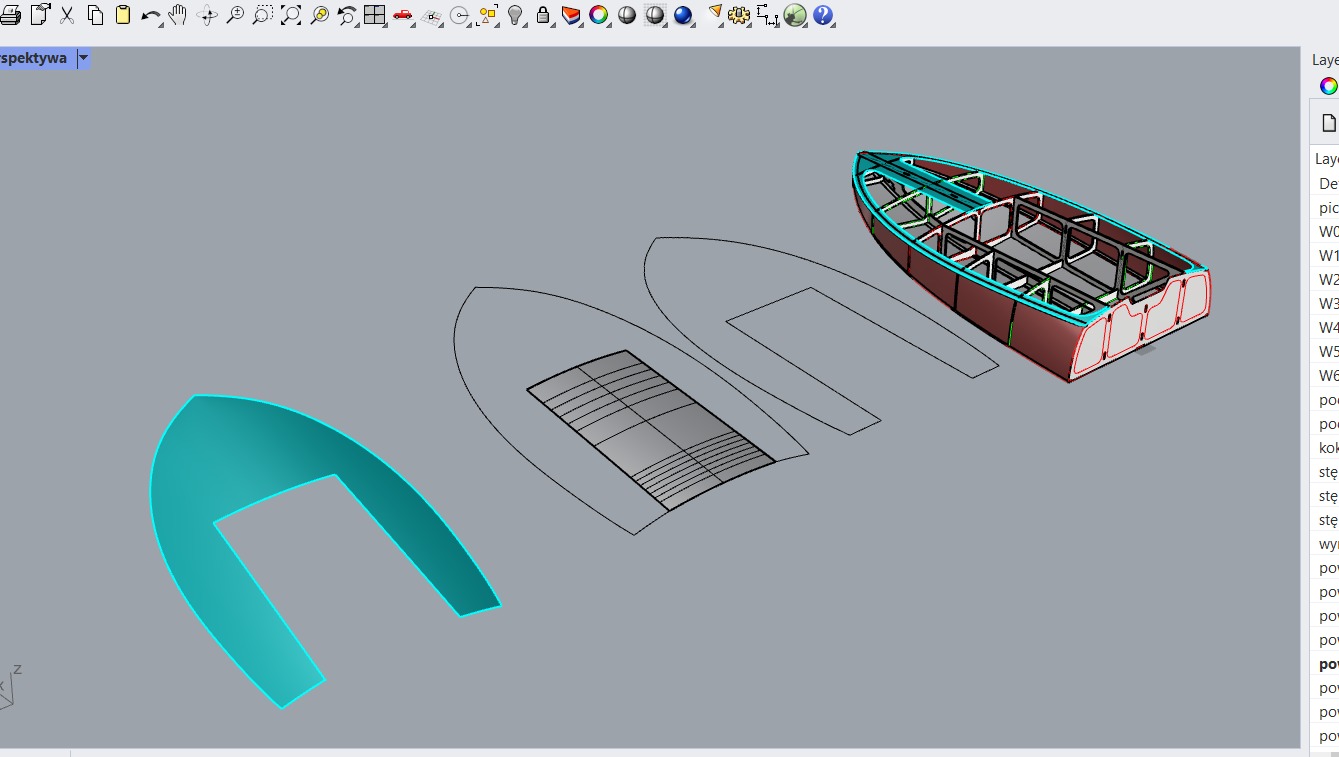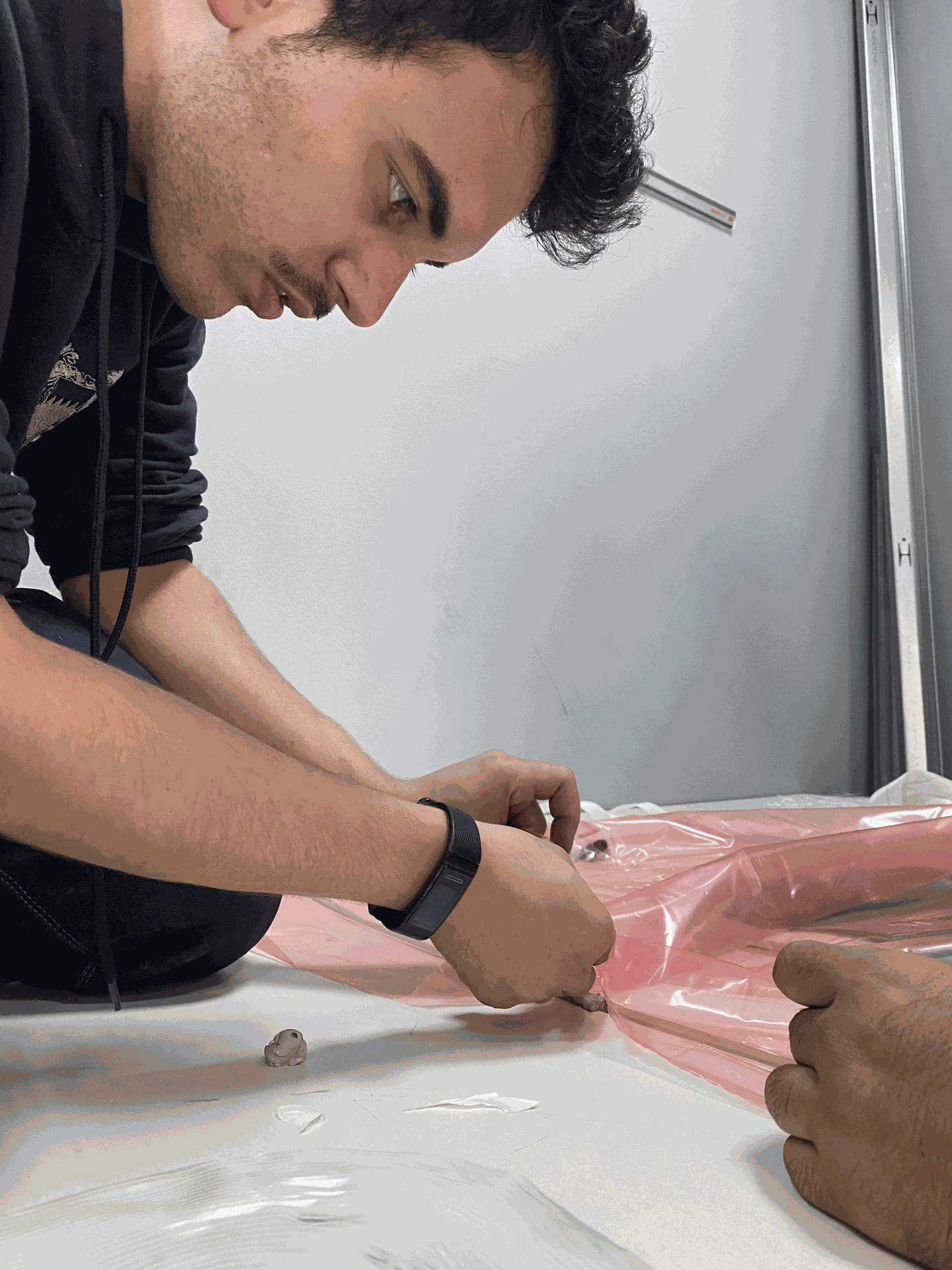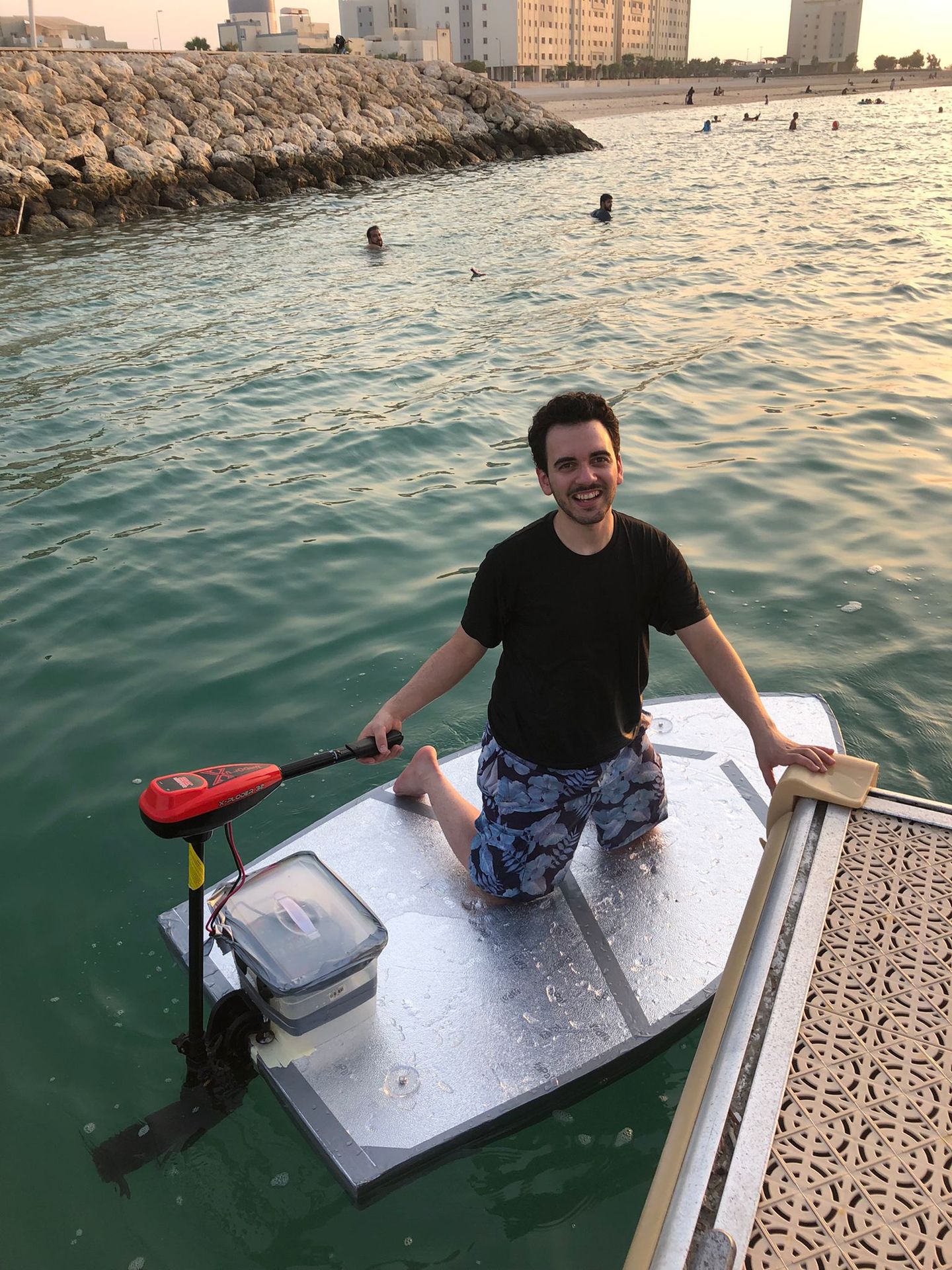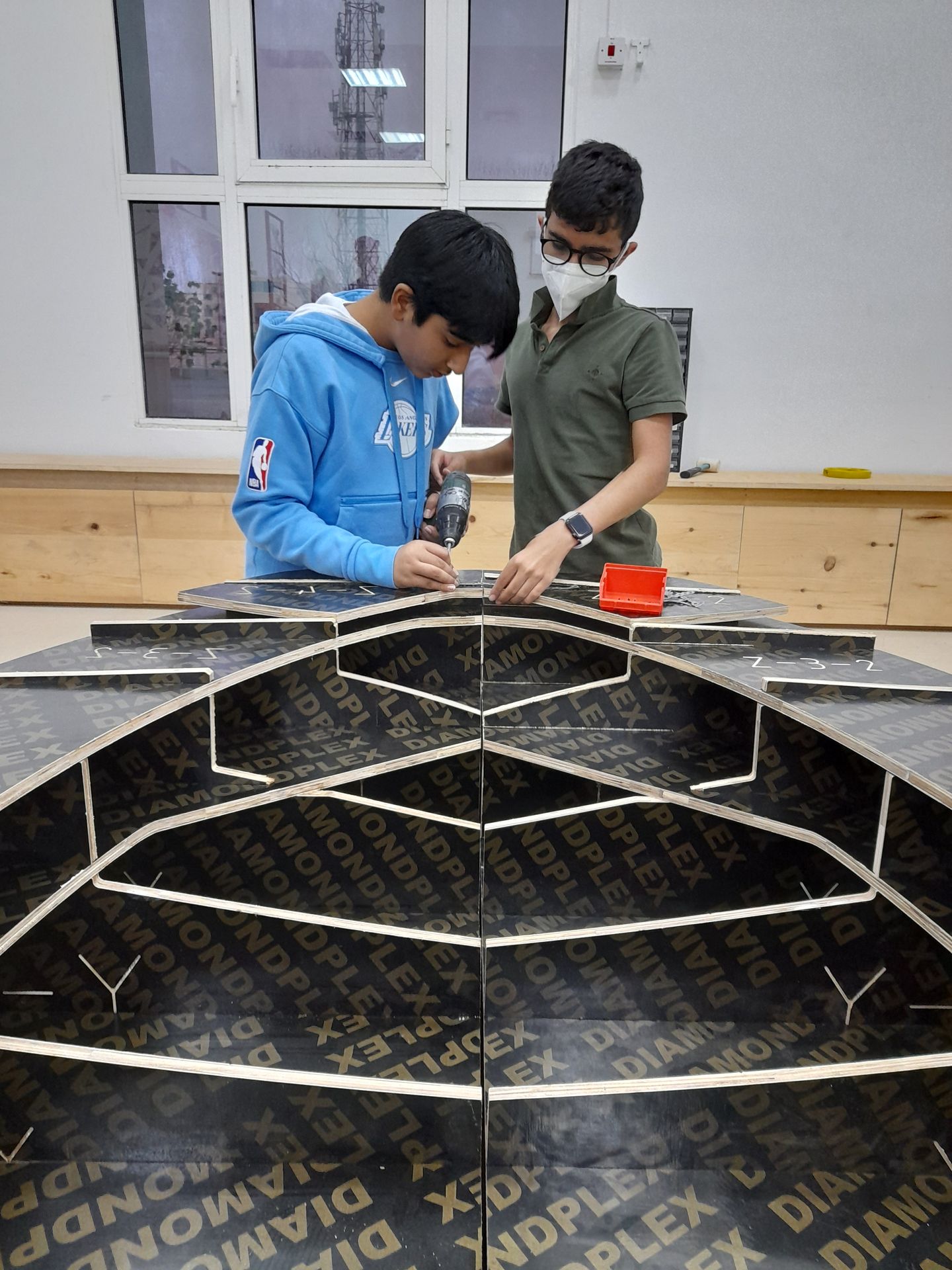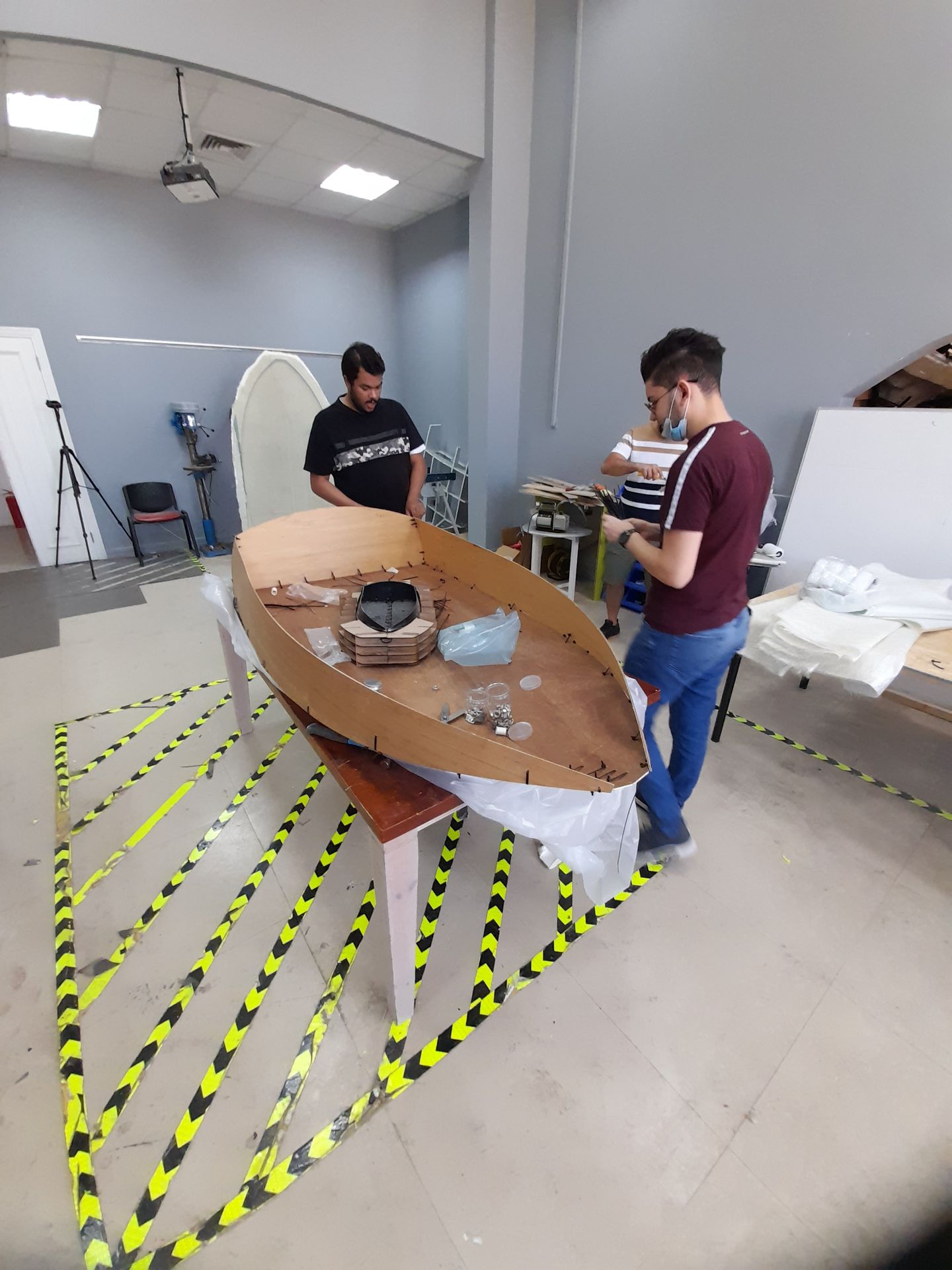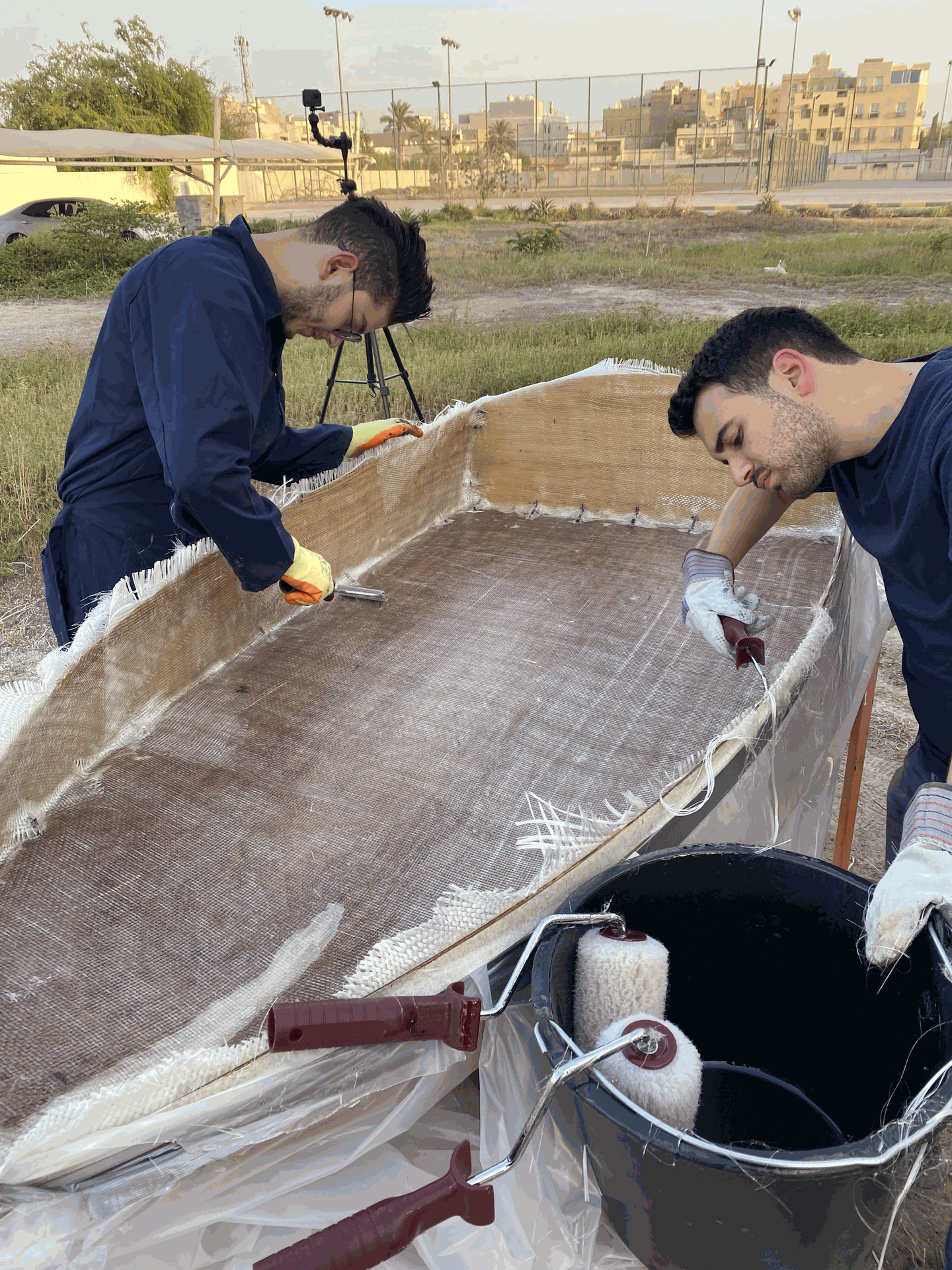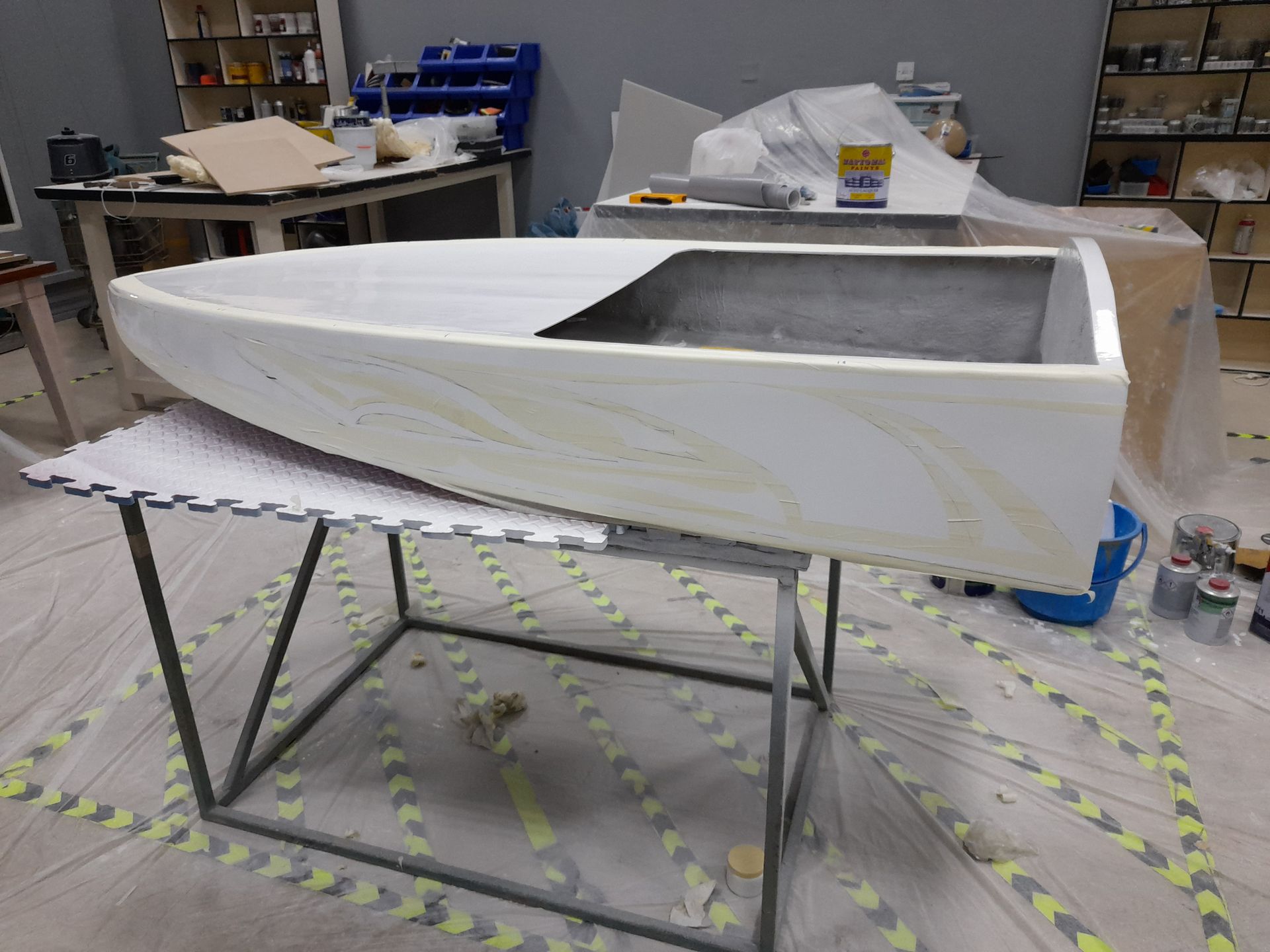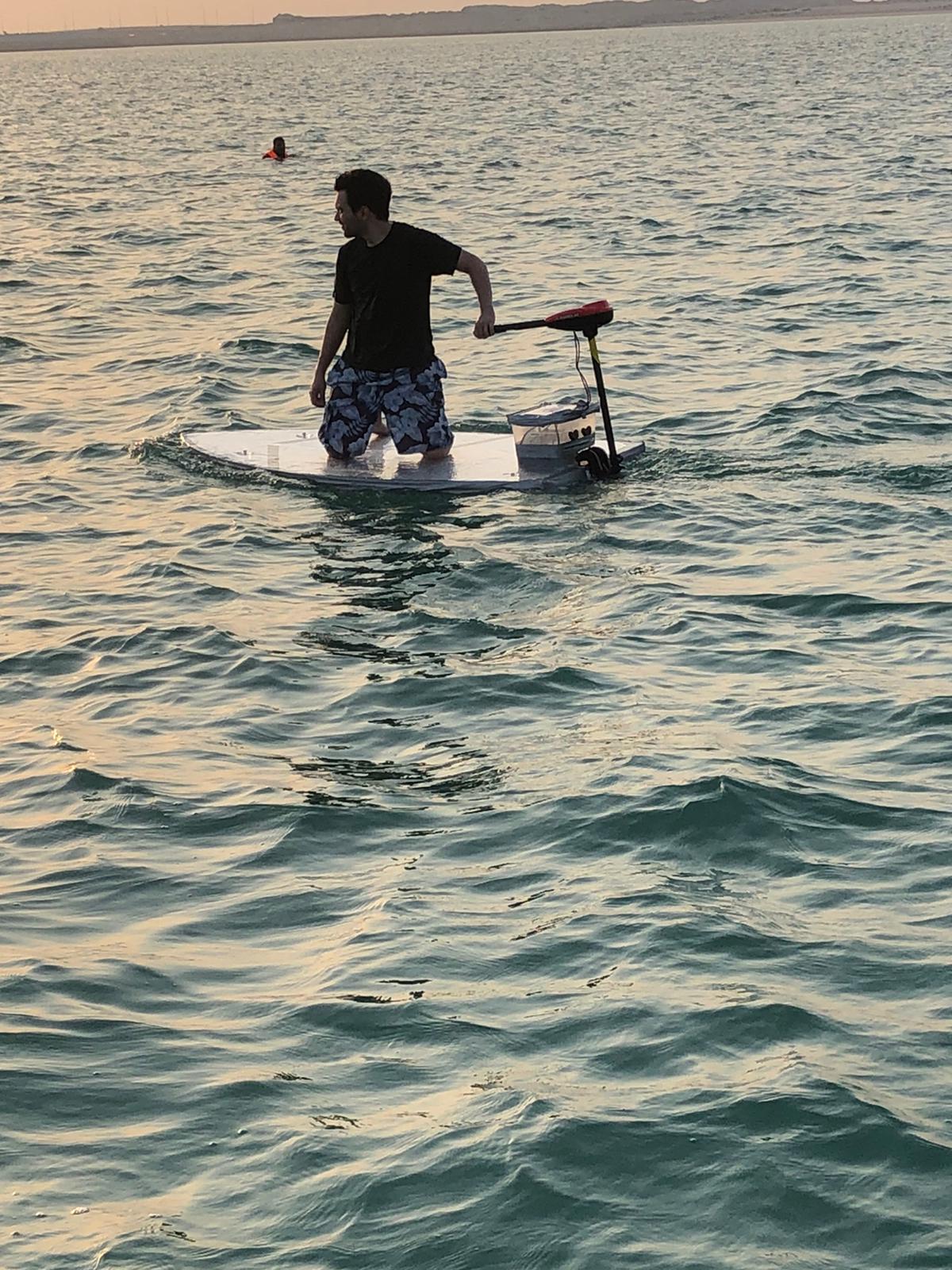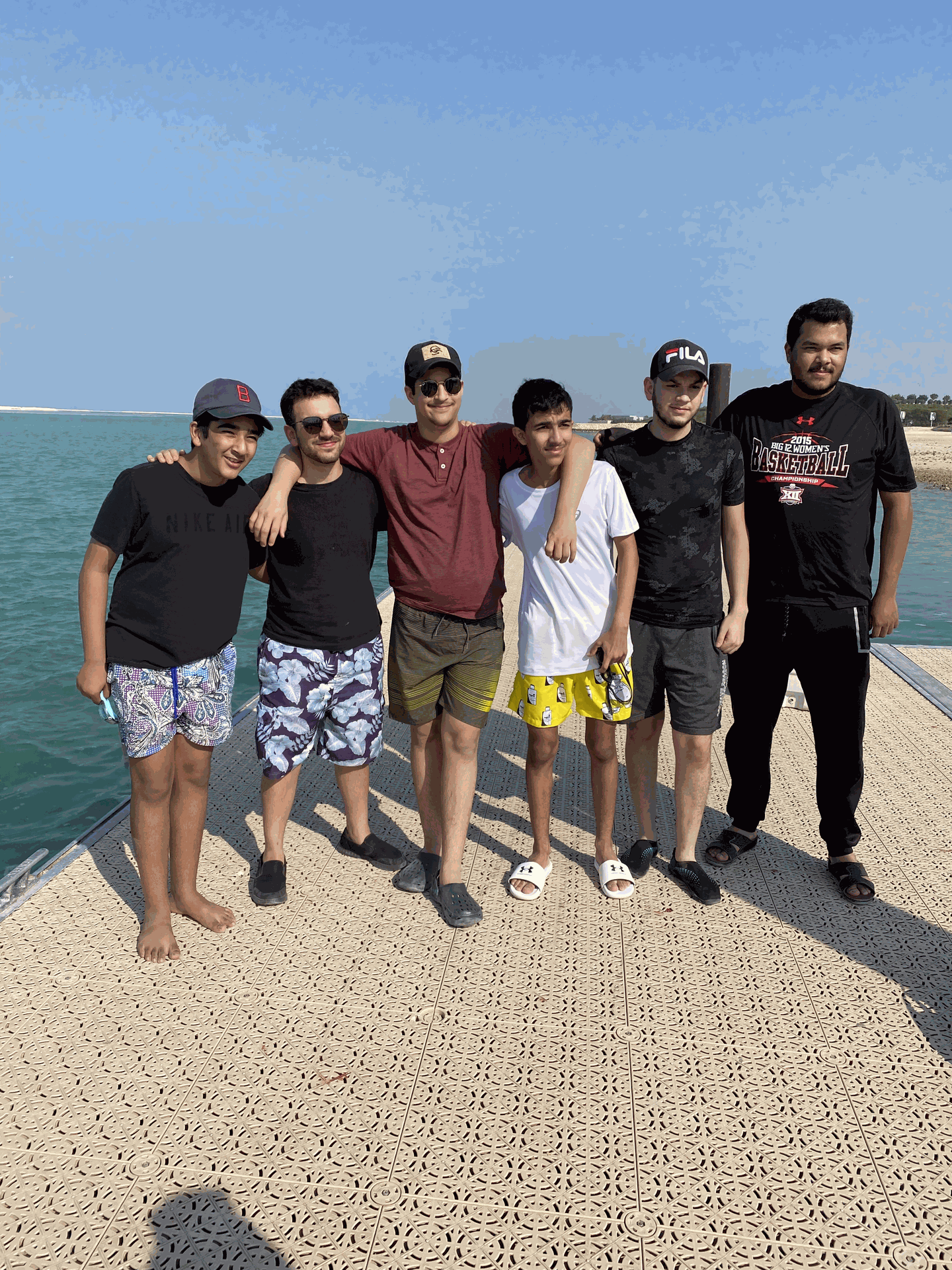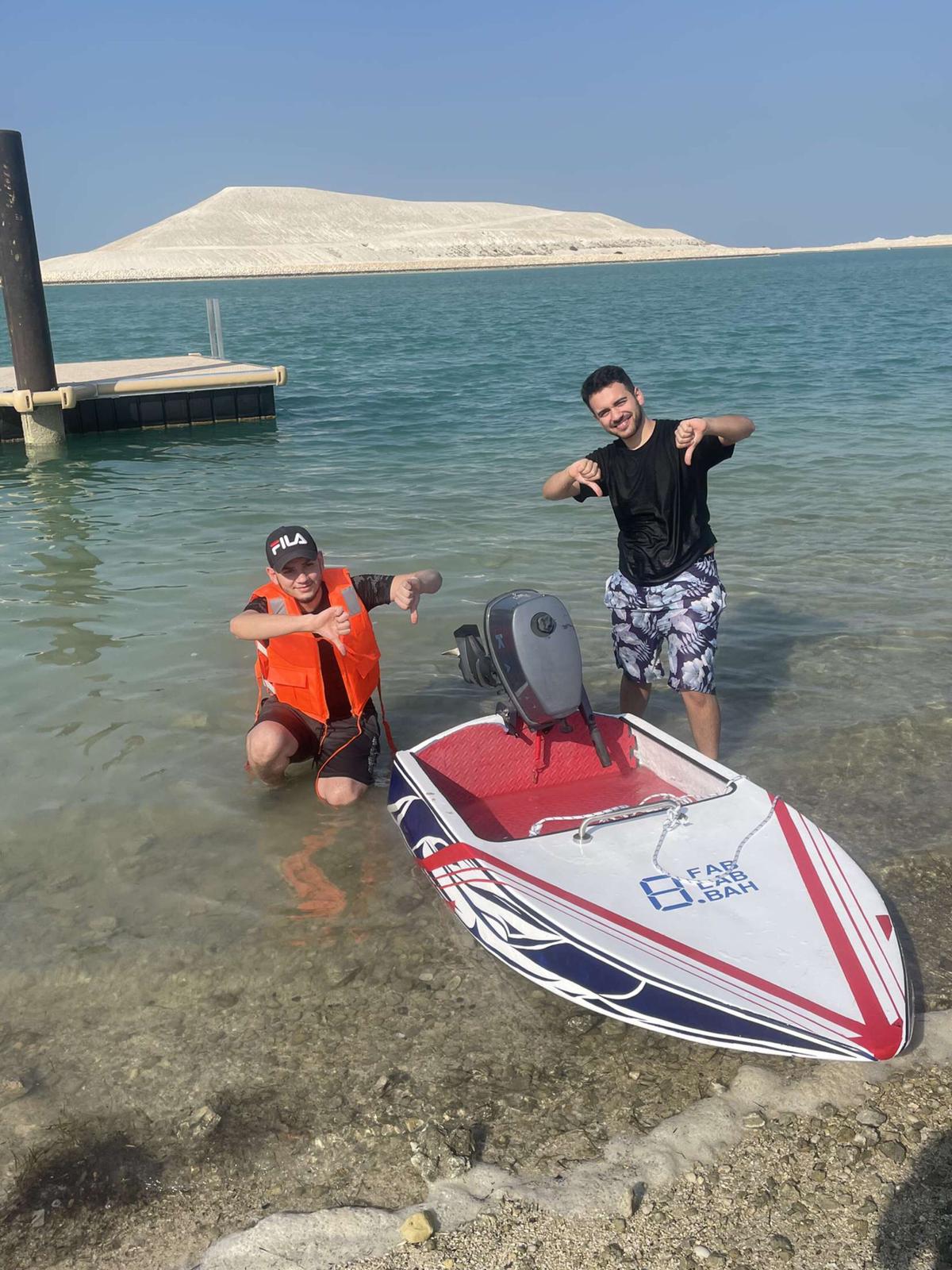After successfully leading the go-kart building program at FabLab, I was given the opportunity to lead the Boat Building Program. This program teaches anyone how to build a boat, taking you from the basics of engineering design and calculation to the practical fabrication of a floating 6hp engine-powered boat. We had three amazing students whom we taught. I began designing the program by building five fast prototypes of boats using different materials. I took them to the sea for testing, which gave me an understanding of the materials I should use in terms of volume and flotation capabilities. Then, I started studying existing boat designs, looking into plans, types, design tricks, flotation calculations, possible fabrication methods, and how to deliver the program in a fun, practical way.
We allowed our students to build small prototypes and verify the calculations. This gave us an understanding of how to fabricate and assemble the real-scale-sized boat. We then scaled our tests by building a bigger boat using ducting sheets. Based on the calculations the students did, we needed three sheets stacked, each sized 1m x 2m. We added an electric motor with a control system and sealed the 12v battery in a plastic box. We tested the flotation in a pool and then took it to the sea. We visited Aldhaeen, a local boat manufacturer, to further understand the fabrication process. We had two options for building the boat structure: one was to build a huge mold and vacuum infuse fiberglass, which failed due to leaks in the mold. The second option was to cut the boat parts using 6mm plywood and then coat the body with fiberglass, which worked well and was faster. In both cases, I had to figure out how to unfold a 3D design, cut it in 2D using CNC, and assemble it to achieve the 3D shape. Finally, we coated the external structure and added structure inside to reinforce the body. We then installed the engine, steering wheel, and a seat.
One of the key learning outcomes from this experience was that people, regardless of age, can learn complex things if we simplify them and let them experiment until they figure out solutions.

